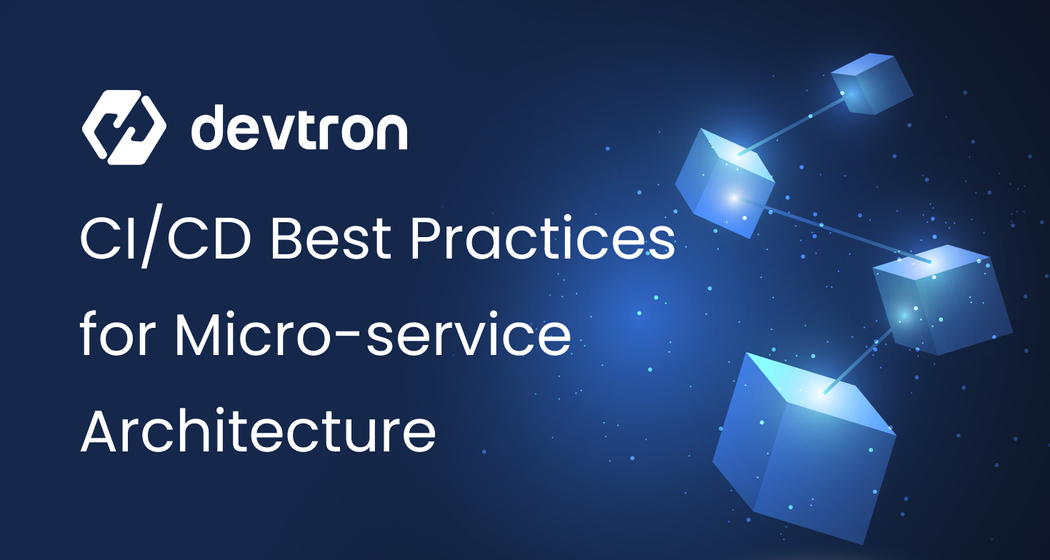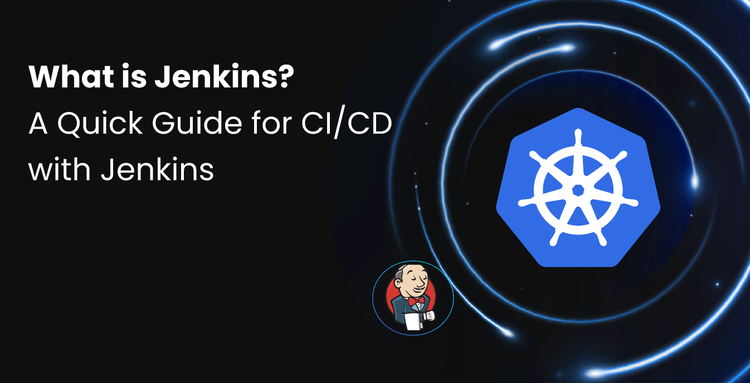- Traditional CI/CD pipelines don’t scale well with microservices.
- Each microservice should have its own isolated, versioned, and secure CI/CD pipeline.
- Progressive delivery (canary, blue/green), GitOps, and observability are critical.
- Platforms like Devtron help teams reduce MTTR, enforce governance, and deploy at scale.
- DORA metrics (lead time, MTTR, deployment frequency) should guide optimization.
Why CI/CD for Microservices Requires a Rethink
Modern development teams are rapidly embracing microservices to accelerate innovation, improve scalability, and foster autonomous teams. But here's the catch: traditional CI/CD processes built for monoliths break down in a microservices world.
To truly unlock microservices velocity, your CI/CD approach needs to evolve from tightly coupled pipelines to modular, independent delivery workflows.
Monolith vs Microservices: The CI/CD Pipeline Shift
In a monolith, one codebase is used as one pipeline. But microservices introduce dozens or hundreds of independent codebases. This means:
- CI/CD pipelines must be decentralized
- Testing and deployments need to be scoped per service
- Teams need autonomy without breaking production
Challenges in Microservices Deployment Pipelines
- Pipeline sprawl leads to maintainability nightmares
- Cross-service dependencies slow down releases
- Security gaps emerge with fragmented secrets and configs
- Lack of ownership results in production delays and governance risks
Principle #1: Isolate Pipelines per Service
Benefits of Service-Level Pipelines
Creating a dedicated pipeline per microservice ensures:
- Faster builds and tests
- Reduced blast radius from failures
- Increased deployment autonomy
- Simpler rollback strategies
How Devtron Enables Scoped Pipelines for Each Microservice
Devtron lets teams define pipelines per microservice using reusable templates. Each service has:
- Its own triggers, environment variables, and deployment policies
- Built-in GitOps support for automated sync and rollback
- Role-based access controls are scoped to specific pipelines
Principle #2: Independent Versioning and Releases
Using proper versioning for the different deployments can help identify releases and makes it easier to trigger a rollback in case of failures
Semantic Versioning Best Practices
Use Semantic Versioning (SemVer) to independently track service versions:
- 1.2.0 → Minor features
- 1.2.1 → Patch fixes
- 2.0.0 → Breaking changes
This allows teams to release without waiting on other services.
Using Devtron for Automated Version Tracking
Devtron supports automated tagging and container image updates:
- Tags are mapped to Git commits
- Registries auto-update on build
- Promotions are tracked across environments (Dev → Staging → Prod)
Principle #3: Use Deployment Strategies for Release
When rolling out an application, it is important to ensure that the release process is smooth and has minimal downtime. For this, there are a few methods which can be used.
Canary and Blue/Green for Safer Deployments
Modern CI/CD separates deploying code from releasing features. Progressive delivery strategies like:
- Canary deployments expose new versions to a small segment
- Blue/Green deployments switch traffic with a simple toggle
These reduce production risks and support fast rollbacks.
How Feature Flags Fit into CI/CD Strategy
With feature flags, teams can:
- Roll out to specific users
- Toggle features without redeploying
- Run A/B tests and gather early feedback
Principle #4: Enforce Ownership and Access Control
Ensuring security for different environments is critical, to ensure that they are no security risks, and deployments are secure.
Role-Based Access Control for Each Service
Every microservice should have clear ownership:
- Only authorized developers can modify pipelines
- Access levels are scoped to services and environments
GitOps and Audit Trails for Governance
Devtron leverages GitOps as the single source of truth:
- Pipeline definitions stored in Git
- All changes are logged and traceable
- Audit trails for security, compliance, and visibility
Principle #5: Standardize Templates and Environments
In large organizations, having standardized application templates can help speed up application deployments, by creating reusable pipeline components.
Reusable CI/CD Templates in Devtron
Standardizing CI/CD templates helps scale consistently:
- Docker builds, Helm charts, manifests = versioned templates
- Define once, reuse across services
Promoting Apps Across Dev → Staging → Prod
Set rules to automatically promote services after successful tests:
- Prevent untested code in production
- Add manual approvals where necessary
- Track promotions with visual dashboards in Devtron
Principle #6: Secure and Scan Everything
When deploying applications, they need to be scanned for security vulnerabilities to ensure that they are risk-free when deployed to production.
Container Scanning at Build Time
Scan container images early in the pipeline:
- Detect CVEs before production
- Shift security left in the development cycle
Stat: 87% of production container images have at least one known vulnerability according to Sysdig 2024 Cloud-Native Security.
Secrets Management for Microservices Pipelines
Avoid hardcoding credentials:
- Use Devtron’s integration with K8s Secrets or HashiCorp Vault
- Control secret access per environment and pipeline
Observability Across All Pipelines
In order to track application performance, a robust observability system needs to be created which can help measure application performance, and provide useful information for troubleshooting and debugging.
Logs, Metrics, and Traces per Service
Observability is critical in microservices. Track:
- Build/test durations
- Failure patterns
- Environment-specific behaviors
Dashboards and Alerts for Faster Debugging
Devtron offers real-time observability:
- Central dashboards for CI/CD health
- Alerts on build failures, deployment rollbacks, and missed SLAs
- Drill down by microservice and environment
Devtron’s Edge in Microservices CI/CD
Use Cases from FinTech, SaaS, and Healthcare
- FinTech: Deployed 200+ services daily with Devtron
- SaaS: Onboarded 50+ microservices in <30 days using Devtron templates
Reduced MTTR, Scalable Deployments, Built-In Security
Devtron combines:
- GitOps workflows
- RBAC and security scanning
- Native Kubernetes deployment templates
- Observability, promotion gates, and auto rollbacks
Teams using Devtron reduce MTTR by 40%, increase deployment frequency by 3x, and onboard new services in under 2 days.
Key Metrics to Track CI/CD Performance
DORA Metrics: Lead Time, MTTR, Deployment Frequency
Track CI/CD effectiveness using:
- Lead time for changes: Dev → Deploy
- MTTR: Time to recover from failure
- Deployment frequency: How often does code hit production
- Change failure rate: % of bad deployments
Measuring Pipeline Health at Service-Level
Devtron lets you slice metrics per microservice:
- Long build durations
- Flaky test detection
- Promotion delays
- Failure patterns by environment
FAQ
What is a service-level CI/CD pipeline?
A CI/CD pipeline dedicated to a specific microservice—responsible for building, testing, and deploying that service independently.
How is CI/CD different for microservices vs monoliths?
In monoliths, CI/CD is linear and centralized. Microservices demand decentralized, service-scoped pipelines with greater automation and governance.
What tools support microservices CI/CD best?
Top tools include Devtron, Argo CD, GitLab, Spinnaker, and Tekton. Devtron stands out for Kubernetes-native CI/CD and unified dashboards.
How does Devtron support multi-service deployments?
Each service has:
- Isolated pipeline
- Service-specific RBAC
- Git-based definitions
- Cross-service observability
How do I manage dependencies between services?
Use mocks for testing, service contracts for compatibility, and tools like Devtron to visualize service interdependencies and update sequences.
Want to simplify microservices CI/CD without compromising on speed or control?
Book a Demo to see Devtron in action.











